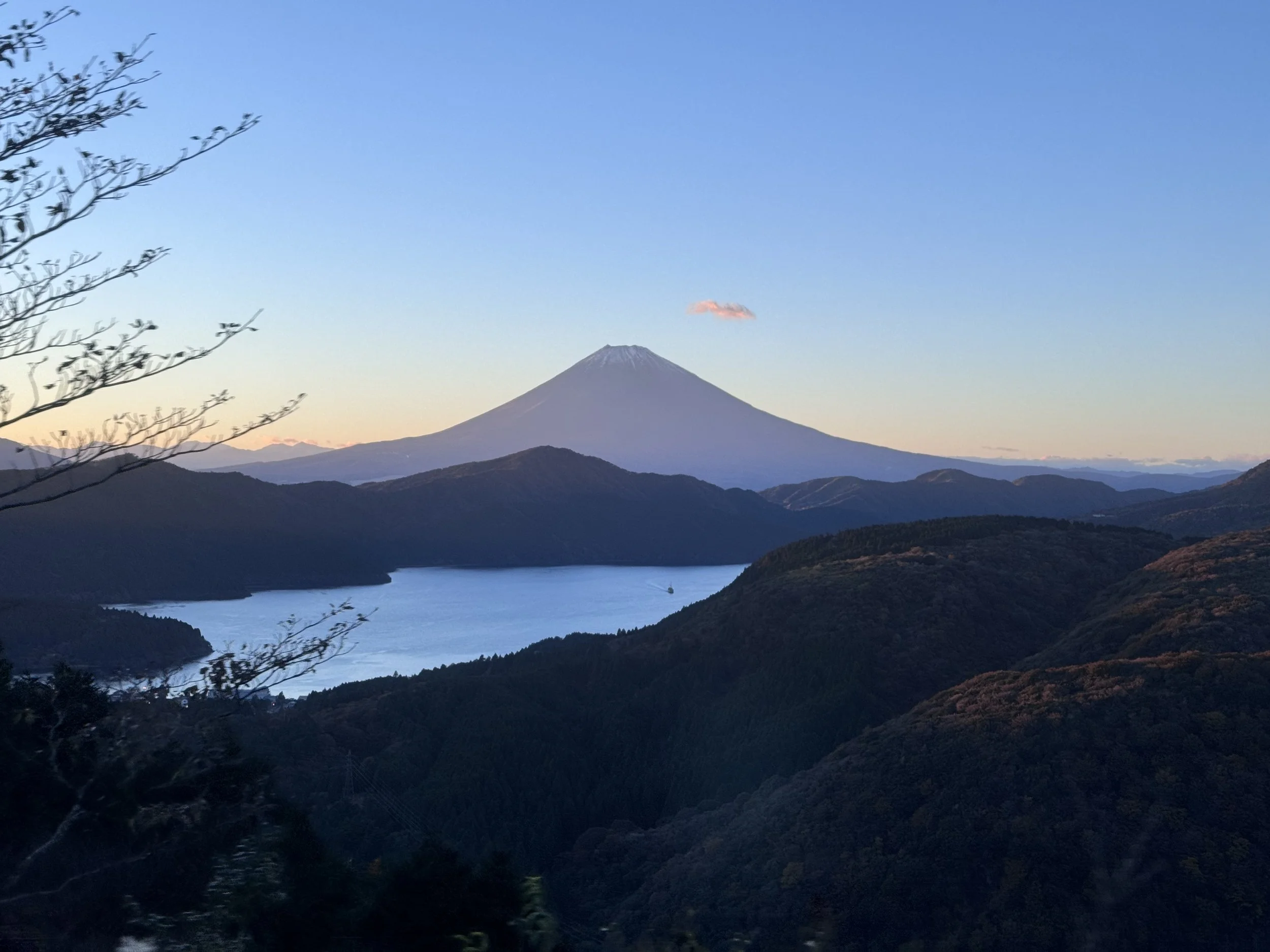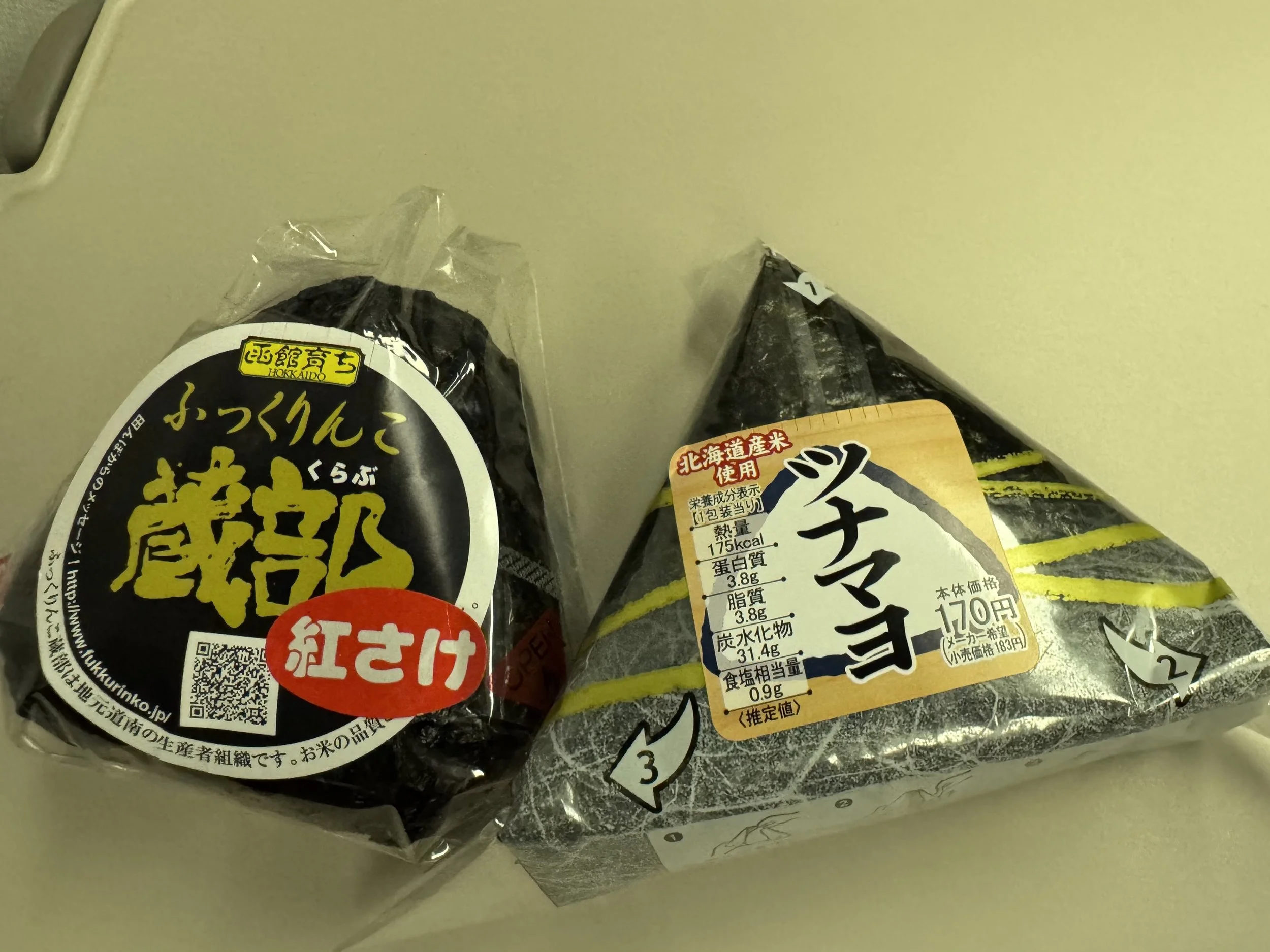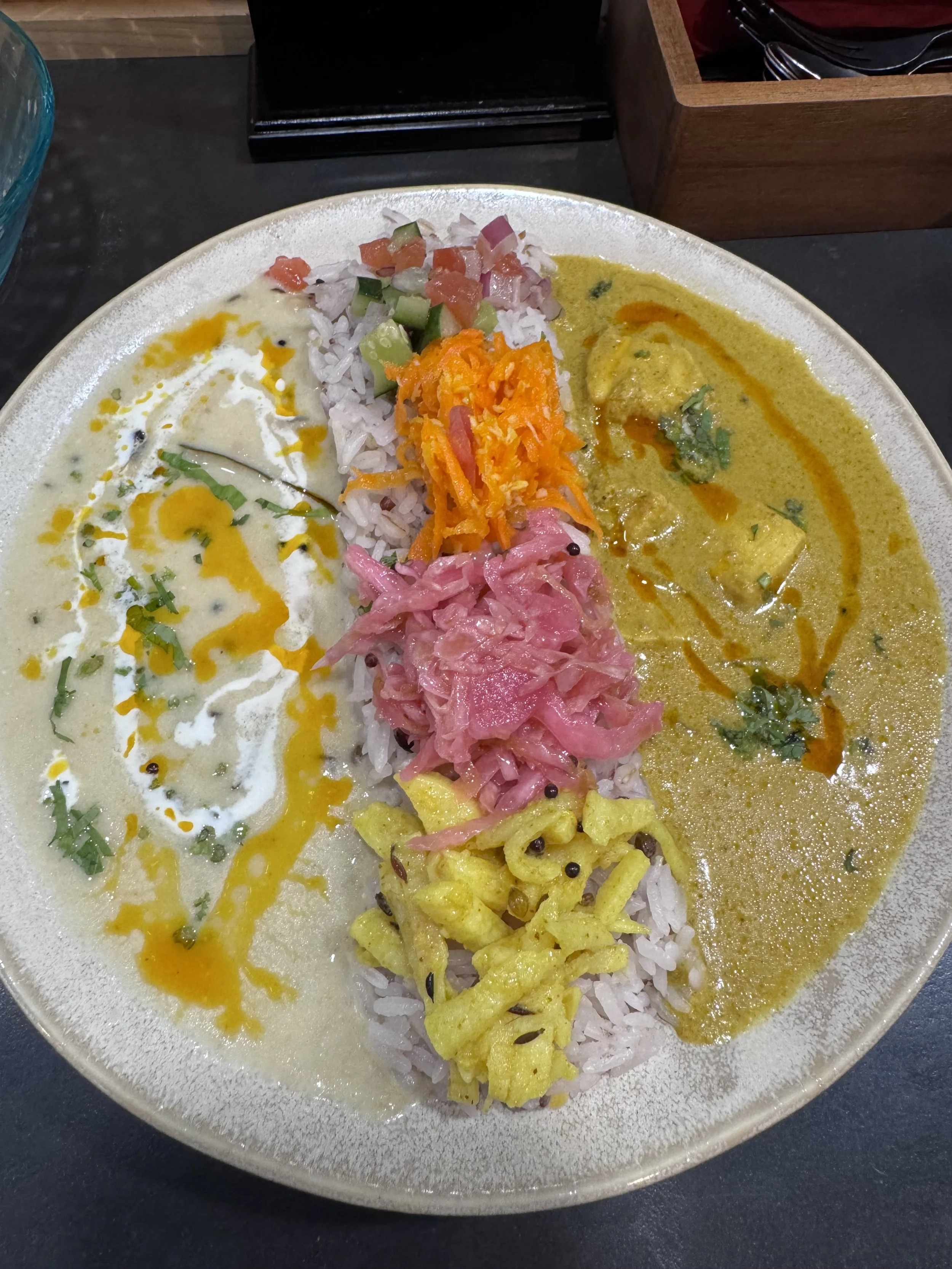Though it hasn’t erupted since 1707, Mt. Fuji is still considered an active volcano. She stands 3,776 meters above the sea.
“Appreciating beauty is an act of devotion. That is why Judaism contains blessings for seeing beautiful mountains, the ocean, a rainbow, and other natural sights.”
A story is told of Rabbi Samson Raphael Hirsch, a German rabbi considered to be the father of Modern Orthodox Judaism (1808-1888), that in his later years he announced one day to his students, out of the blue, that he was traveling to Switzerland to hike the alps. When his astonished students asked him why, he replied that when he died and came face to face with God in the Olam Haba (the world to come) God would be less interested in exactly which commandments he had fulfilled or had perhaps fallen short of.
“Shimshon,” Hirsch believed the Almighty would ask, “Did you see my alps?”
Certainly Rabbi Hirsch would have expected challenges on the journey. In addition to the normal concerns any traveler, never mind an elderly one, would have faced at the end of the 19th Century, surely he must also have been concerned about following the commandments while far from home. In particular, he might have worried about being able to find kosher food. Yet such was his sense of the importance of seeing the beautiful places of the world, that he undertook the voyage in spite of his misgivings.
My takeaway from this story is the idea that we are obligated within the limits of our time and resources to see and experience the beautiful places in this world and that we can’t let concerns about observance stop us from undertaking a journey. It was this idea that I had in mind as we planned a trip to Japan, even understanding that it would be challenging to keep kosher here.
I didn’t begin observing kashrut until I was in my mid-30s, so just over 30 years ago now. I grew up eating pork, shellfish, and all manner of trief and liked it. But what happens is, after you do or don’t do something for a long time, your tastes and attitudes change. The idea of eating pork or shellfish now is as appealing as eating cockroaches.
In my practice of keeping kosher, my go-to strategy is to be mostly vegetarian. In the time I have been keeping kosher, I have only traveled outside the U.S. (other than to Israel) a handful times. Canada, Mexico, the Netherlands, and the U.K. didn’t pose any difficulties. All of those countries “get” vegetarians and eating vegetarian for me is an acceptable way to keep kosher. But Japan would be another story.
For those of you who are unfamiliar with the Jewish dietary laws here is a little primer on kosher foods and restrictions. This is not meant to be a full exploration of the subject. For that consult your local rabbi or suitable text.
Meat
Meat is the most complicated. In order for meat to be kosher it must meet three criteria.
It must be of a permitted species of animal. Kosher animals are those that chew their cud and have a cloven hoof. These include cows, sheep, goats, and deer. Forbidden animals include pigs, rabbits, dogs, and cats. No insects ever! (But honey is kosher for some reason.) Among birds, domesticated birds like chickens, duck, geese, and turkeys are kosher. Birds of prey like hawks and eagles are not.
It has to be slaughtered in a special way by someone specifically trained in how to do it. The technique is intended to minimize the animal’s suffering and to make its death as instantaneous as possible. Food that has been killed by hunting is off limits. After the animal has been slaughtered, all the blood must be drained since it is not permitted to eat blood.
It must be prepared in a way that doesn’t render it not kosher. For example, Jews are prohibited from eating milk products and meat together, so meat must be prepared in a way that it doesn’t come in contact with any dairy. That could include contact with pots or utensils which were previously used for dairy.
Fish
Fish must be a a permitted species as well. The rule of thumb is that the fish have fins and scales. So salmon, tuna, and flounder are ok. All forms of shellfish and creatures such as squid, eel, and octopus are out. Fish is not considered meat so it can be served with meat or dairy and doesn’t have to be slaughtered in a particular way.
Dairy
Dairy products are easier. For the most part the milk just has to be from a kosher animal and not have come in contact with meat or an animal byproduct. (Many rennets used to make cheese are made from an animal byproduct and therefore are forbidden in cheese.) But cheese made with vegetable rennet is easily available these days, at least in the U.S.
Vegetables
Finally, there are fruits and vegetables. Virtually all fruits and vegetables are kosher. Some observant Jews don’t eat things like broccoli out of concern that small insects could be living undetected in the florets. I, who have had bugs land in my oatmeal while camping outdoors, am not of this stripe. I will eat most any vegetable matter presented with the exception of paw-paw fruit (sorry, Ethan!).
Some Jews (like me) will eat food out that “seems” to be ok, like food at non-kosher restaurant that is claimed to be free of non-kosher stuff. Others will only eat in restaurants that are under the supervision of a rabbinical authority that they trust.
For those like me who keep kosher a bit more “flexibly” you do the best you can, and hope you make it to the next Yom Kippur to ask for forgiveness for the inadvertent but inevitable slip ups.
Now more than halfway through my Japan experience, I can report that keeping kosher is doable in Japan, at least for those willing to eat food that is unsupervised. However, doing so is not without challenges. Here are a few.
There is a lot of pork in Japan. Every restaurant it seems serves pork in some form. Pork is a mainstay of many Japanese dishes such as ramen. It is in most pre-made sandwiches. According to some sources pork is the most commonly consumed meat in Japan, with more than 20 kg consumed per person per year. The reason for this appears to be two-fold. It is easier to raise pigs than cows on the limited land, and also there was an ancient stigma on the eating of beef. Having said that, there is plenty of beef and chicken consumed here as well. Most of it being grilled in front of restaurants and giving off inviting aromas. Sadly, none of it is kosher (see requirements two and three under “meat” above.
There is also a lot of shellfish. Second only to pork, shrimp, oysters, and clams, crabs top the menus. Also common are squid, eel, octopus, and sea urchin.
In addition, many things are not labeled in English so even if something might be ok, it is hard to be sure. Apple and Google translate apps have proven to be of limited utility here with translations such as “seafood” and “special sauce.”
Having said that, here are the strategies that have worked for me.
Convenience stores (Combi).
Most of the time rice balls have English labels…but not always!
Combi like Seven-Eleven, Family Mart, and Lawson Station are everywhere. You can hardly walk 200 meters without coming upon a combi. Combi sell rice balls, sandwiches and fruit. Rice balls have been my go to for a quick, cheap filling, Torah sanctioned snack. A rice ball is actually not a ball at all but a sort of a triangle of sticky rice. The triangles have a filling that is almost always marked on the package in English. Many of these are things I can eat: tuna, salmon, pollock roe, or pickled plum. Two of these are a pretty filling meal and they cost about $2 each. The rice balls come with a wrapper of nori (seaweed) in special packaging that keeps the nori separate from the rice until you are ready to eat it. I’ve learned the hard way you have to follow the directions on how to unwrap. If you don’t you’ll end up with a big sticky rice ball in your hands. When done correctly the seaweed perfectly envelops the rice, making it easy to hold and eat and adding a pleasant crunch from the nori. It is kind of like eating sushi in triangle form. My favorite so far has been one that comes in a roll shape as opposed to a triangle and contains rice, minced tuna, and wasabi. Delicious!
Many of the sandwiches in the combi include ham but there is also always tuna salad and egg salad. The salads are pureed to a soft paste and the bread is fluffy, tasteless white bread but also not bad. The combi also sells cut apples or pineapple, in sealed bags, salads in a plastic box, and ice cream. They also have saki, beer, whiskey, as well as personal care products, and undergarments. You can pay for it all with your transit card on your Apple Watch or phone.
The combi ensures you need not go hungry or without clean underwear.
Automat — Modern Sushi Edition
Sorry, Mr. Anthropomorphic Octopus, I can’t eat you!
Japan takes the automated sushi restaurant to the next level. Our visit to the Sushiro chain in Tokyo was tasty and fun. When you arrive there is a machine where you register. You indicate the number in your party and the machine gives you a ticket. There was short wait and then our number was announced in Japanese, English, and also displayed on a sign. After being called, you return to the machine and scan your ticket. The machine prints out little pieces of paper with your seat numbers. You take the papers and find your seats at the counter, which is all cleaned and ready for you.
From here all interactions are with an iPad-like device — one for each seat. The biggest challenge was figuring out how to change the language to English but our neighbor at the counter was able to help with that. With that out of the way, all one need to do is flip through the pictures of the different sushi and tap the ones that meet one’s tastes or dietary restrictions.
The selected items appear in a list and when ready, you tap a button that sends the order. It takes 3-5 minutes for each item to arrive by conveyor belt. You get a notice on the iPad before the item arrives, then moments later it appears docked right in front of you. There is a condiments tray at your seat with soy sauce and wasabi. Apply these as you see fit and enjoy. I am familiar enough with sushi that I could order with confidence fish that I knew were kosher. If I wasn’t sure, I didn’t order it.
There was also a container of matcha (ground green tea) and a spigot for hot water, and you could drink tea to your heart’s content. In addition to sushi, there was also vegetable tempura and an assortment of sweets. We capped off the meal by sharing a tiny creme brûlée that was delicious.
When you are finished, you review everything you had on the iPad (check the price if you wish) and press a button to indicate that you are finished. You take your original ticket that the machine printed out when you came in back to the front where you pay. As with everywhere in Japan there is no tipping, and the tax is included in the price. The price you see is what you pay. The only time you interact directly with a human being is when you pay but that is just to tap a credit card, bow, and say, “arrigato gozimus!”
Grocery Stores
Finally, there are the grocery stores and food emporia. At these places you can pick your own foods from fresh fruit, to breads, cheeses, or even ready made vegetarian sandwiches. Often the labels for processed or prepared foods are only in Japanese. One must rely on the translations apps to determine if the contents are ok. Sometimes you just can’t tell and have to pass. Nicer stores also have large selections of sushi in a box, which can be very good and fresh. Usually, you can get a box of all tuna or all salmon sushi
The prices at the markets are quite reasonable and you can find a bench to eat at (eating while walking is considered very rude in Japan) or retreat to one’s hotel rooms to dine at the little table if there is one, or in bed if not.
Random Finds
Beautiful dish of fish and bean curry we found in Nagano, Japan.
We have also found restaurants that serve some vegetarian dishes. We had vegan ramen one day that was very good and there are also many Indian restaurants in Tokyo which always have a number of vegetarian dishes. At the Onsen (hot spring bath) in Hokkaido, they had several Indian style curries served with naan that were vegetarian. Sometimes our hotel offeres a breakfast buffet with lots of options including cooked fish, miso soup, eggs, rice porridge, and croissants! There is also the occasional vegan restaurant. We found them in Tokyo, Kyoto, and Fukuoka.
Yes, there are a few experiences that I will have to forgo. I won’t be able to sit down at a high end sushi bar and tell the chef “omakase shimasu” or “I leave it to you,” trusting the chef to make and serve whatever he or she thinks is best. It would be unthinkable here to be served a lovingly prepared clam nigiri and refuse to eat it. The last time I told a sushi chef in the U.S. that I could only eat fish that had fins and scales, he looked at me with disbelief and shouted, “YOU WANT TO EAT FINS AND SCALES??”
I will also not get to experience the non-veg ramen, which contains large slabs of pork.
In the course of his travels, Rabbi Hirsch certainly faced obstacles to his observance. Mistakes can happen. There is (as in one’s own country) simply no way to know how every item was prepared or what pot it was cooked in. Even in supervised restaurants or in one’s own home the occasional mistake can happen. And so (like every Jew everywhere) I navigate the law in a way that makes sense to me yet allows me to experience much, though not all, of what this world has on offer. The obstacles are the path, after all.
If a time comes (may it be many years from now) that I find myself facing the master of the universe, at least I will be able to say why yes, yes I did see Mt. Fuji. Nice work!
Worth pondering: what is it you are still obligated to see or do in the time that remains to you? What obstacles, real or constructed, block your path?
The world’s a narrow bridge, fear nothing.



